|
Located by the Dutch authority ROB/NISA in the 1990s on 10 m depth. In the bottom mud, the remains are well preserved. It is a 40 m long merchant ship dated to c 1650. Reburied by the archaeologists in an effort to protect the site. HistoryFor centuries, the Netherlands has been an important maritime nation. Amsterdam was a staple market for all kinds of goods within Europe. Grain from the Baltic region was traded here, as well as goods from the East and the West Indies. For a long time however, it was impossible for a big ship to enter the Amsterdam harbour with its cargo because of the shallow waters in this area, called Pampus. As a solution, these ships were loaded and unloaded on the Texel Roads, in the Wadden Sea in the North of Holland. Protected from the North Western winds by the Island of Texel, it was a relatively calm area. Relatively, because during centuries thousands of these ships have been wrecked by storms. One example is the storm on 24 December, Christmas Eve, 1593. That night, a fleet of around 150 ships was caught by a South Western storm. In a few hours 24 ships sank and 1050 sailors died. Another example is the South Western storm on 3 November 1638. In that night 35 ships went down. From 1576 until 1790 at least 32 of these severe storms are registered.1 One unfortunate ship that sunk during Christmas Eve 1593 is the Scheurrak SO1-wreck. This wreck has been excavated by the Netherlands Institute for Ship and Underwater Archaeology (ROB/NISA) between 1989 and 1997 and was used to develop ways to do sound-archaeological research in muddy waters.2 The wreck turned out to be that of a Dutch merchant ship with a cargo of (still well preserved) Baltic wheat. This is however not the only shipwreck already located in the Western part of the Wadden Sea. In a small area of a few square miles about sixty shipwrecks with possible archaeological value from the sixteenth, seventeenth and eighteenth century are located (picture 1). Most of these wrecks have been found by local fishermen and divers. 3 Until now twelve of these sixty shipwrecks have been investigated by the NISA in order to evaluate them. Picture 1: The Texel Roads, in the Wadden Sea, with the position of some of the BZN 10-shipwreck located in the Burgzand area. Drawing ROB/NISA The BZN 10 wreck evaluatedOne of these twelve shipwrecks that have been evaluated in the Netherlands, the BZN 10-wreck, has been chosen to be one of the four shipwrecks involved in the EU project "Monitoring, Safeguarding and Visualizing North European Shipwreck Sites (MoSS)". The pre-disturbance assessment of this shipwreck took twelve days, without disturbing the site. Picture 2: The "Web" of datum-points of the BZN 10-wreck. Drawing: ROB/NISA. To be able to make a picture of the wreck-site, nails were hammered on specific points in the wreck. These nails were numbered and their relative distances measured, as well as the depth of each point. A computer program called “Web-it” plotted these points at their relative positions (picture 2). The drawings made by the archaeologist under water could therefore be placed exactly in the wreck (picture 3), resulting in a scaled map of the wreck-site showing everything surfacing the sea-bed (picture 4). Picture 3: An underwater sketch of one of the anchors found on the BZN 10-wreck. Notice the datum-points 828 and 815 at the top of the picture. Drawing: ROB/NISA. Only a few objects that can help us date the wreck are taken from the wreck site – mainly ceramics and some wood samples for dendrochronological analysis. Picture 4: The result of combining the "Web-it" measurements with the underwater sketches. This picture shows everything of the BZN 10-wreck that surfaced the seabed in 2000. Drawing: ROB/NISA. Some archaeological dataWith this careful approach, the following things can be said about the BZN 10-wreck: Wreck siteThe wreck site is 40 by 25 meters and the ship itself must have been around 40 meters long. An almost complete starboard site was visible, not only from bow to stern, but also parts of the bulwarks are still there. Near the bow the ships decoration in the form of a man’s head has been extremely well preserved. The ship had two continuing decks with a considerable flare. The oven is very near to the bow of the ship. It’s not intact anymore, but probably still in its original place. Besides these things, much of the rigging like blocks and ropes, has been preserved as well. A special feature about this ship is the huge amount of pinewood (Pinus sylvestris) used in the construction. Near the stern some of the outer planking, the frames, the ceiling and the planks for the compartments are made of this wood as well as all the deck beams and deck knees. The use of so much pinewood does not indicate this ship to be of Dutch origin. Because of the amount of pinewood and the lack of well-preserved and accessible oak, dendrochronological dating was carried out on pinewood samples from the deck beams. Two samples gave “post quem” dates of 'after 1645' and 'after 1646'.4 The wood originates from North Germany. Near the stern on the outside of the planking, above the second deck, a construction was found that appears to be a ventilator (picture 5).5 Although mentioned in historical sources, this has never before been found on a shipwreck. Picture 5: A unique find from the BZN 10-wreck: This little "birdhouse" above the second deck, near the stern, is probably a ventilator. When sailing, the pressure built up in the little house. Through a little hull in the planking the pressed air was blown in the (captain's?) cabin. Drawing: ROB/NISA CargoThe cargo of the ship consisted of a few hundred so-called “olive jars”. These jars have been found in many different shipwrecks, usually Spanish, but also on terrestrial sites all over the world.6 The jars were not always used for olives or olive paste. The jars from this ship, for example, contained a paste of possibly benthonite earth with urine. This was used in the processing of wool. 7 The preservation of the jars is extremely good: even the organic baskets are kept and the corks are still in their places due to the well-protective soft soil of the Wadden Sea (picture 6). A few well-preserved oak casks contained grapes and small fish bones. Another part of the hull, in the bow, had been reserved for pinewood boxes with schist slates in different shapes. Picture 6: Underwater photo of the cargo of olive jars from the BZN 10-wreck. Photo (from video): ROB/NISA. InventoryThe inventory that has been seen at the site consists of cooking gear, earthen- and stoneware and nine iron canons with gun-carriages. The earthenware found on the surface of the wreck is dated to between the 12th and the 19th century. This shows how dynamic the Wadden Sea is. Most of the earthenware, however, is from the second half of the 17th century and originates from the north of Germany. It’s local red earthenware, not for the use of trade. The mixture of finds from different origin and different periods is more a rule than an exception on shipwrecks in the Wadden Sea. Unused clay pipes marked EB and dated in the last quarter of the 17th century are found on at least four different shipwrecks in the Burgzand area due to the high dynamics with tidal movements. 8 During the evaluation, a seed of a Central or South American palm (Orbigyna spec.) was found in the wreck (picture 7). How does a nut or seed, like this, end up in a shipwreck in the Wadden Sea? The first and obvious reason can be that it has been taken to this place on board of the BZN 10 wreck. However, during evaluation the site was not disturbed. The seed therefore had been found on the sand surface. Orbygina nuts have the ability to travel thousands of miles by ocean currents, possibly even as far as the Wadden Sea. But there can also be another reason. Other Orbynina nuts like the seed of the Cohune palm (Orbygina cohune) were shipped in World War I to England for the production of charcoal filters for gasmasks. Was this also the case for this one? It will be difficult to find out the truth about this little nut. Striking however is the fact that two other identical Orbigyna nuts have been found in two different Dutch shipwrecks from the second half of the 17th century. These nuts clearly belong to the wrecks. What was the purpose of bringing these seeds into Europe? Hopefully one day we will know. Picture 7: Seed or nut from a Central or South American palm (Orbigyna spec.). The seed is 11 by 6 cm. Photo: J. Pauptit (Leiden University). Protection? Assessing the collected dataWithin twelve days we were able to get a fairly good impression of this shipwreck site. As seen above, it is clear that the conservation conditions on the BZN 10-wreck are excellent. It is however threatened by erosion and the shipworm (Teredo navalis). We can conclude that this ship was probably not Dutch. The construction wood and the inventory point to a North German origin. The cargo is probably Iberian. Was it a 17th century German merchant ship on his way back from a trip to the Iberian Peninsula? The facts point at that direction. The wreck is considered as being archaeologically very interesting and is therefore protected by fine polypropylene gauze (picture 8). Future research at this wreck can give us much information about seafaring and trading on the European West Coast and the (intermediate) role of the Netherlands between the South and North European markets. Picture 8: The BZN 10-wreck protected by many gauzes in 2001. Drawing: ROB/NISA. The coming three years this protected wreck will be monitored and data about degradation processes collected for the European project MoSS. As I have stated above, the wreck is really threatened by nature. Now it's time to find out: how much, how quickly and what we can do about it. In The Netherlands we are especially focussed in testing the shipwreck protection we developed over the last four years (picture 9). This method is cheap and easy to put in its place. It seems to work very well: over the years an artificial reef is created on the seabed that covers the wreck with sand and gauzes. The question however is, if the wreck and its artefacts are permanently being protected from the shipworm and other sea organisms. Picture 9: Schematic view of protecting a shipwreck underwater with polypropylene gauze, as executed by the NISA between 1998-2001. Drawing ROB/NISA. Martijn Manders, ROB/NISA Notes
Related document |
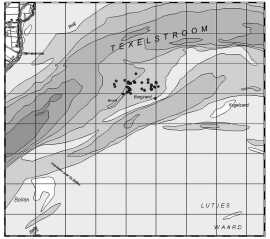
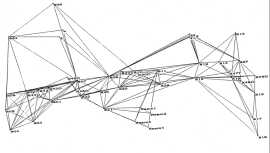
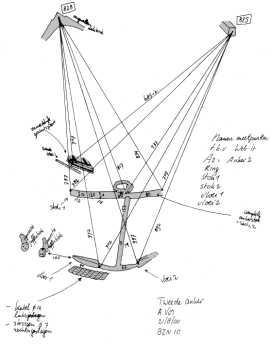
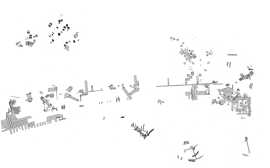
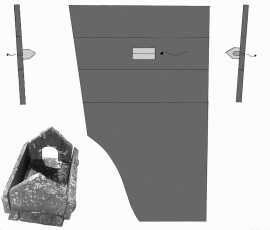
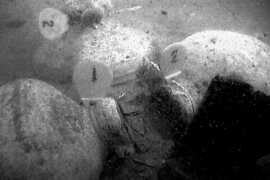
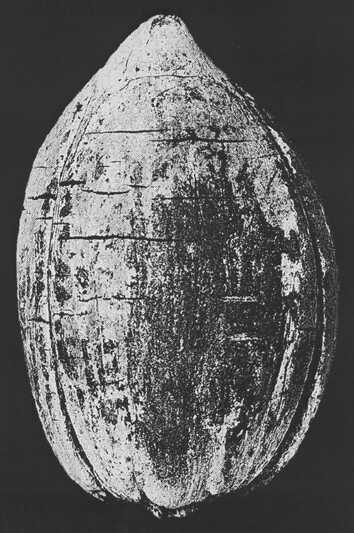
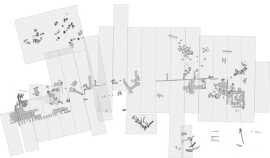
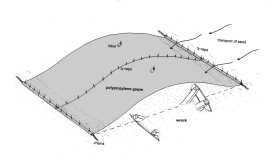
 Back to Nordic Underwater Archaeology
Back to Nordic Underwater Archaeology